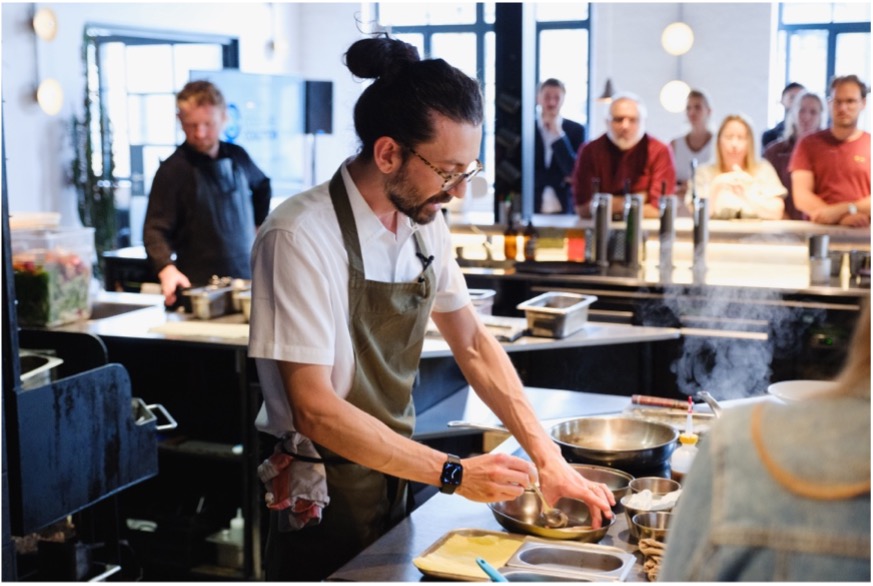Beyond the Flames: Expert Insights on Gas Cooking
CLASP asked experts about the impacts of cooking with gas appliances. Watch these to understand the health and environmental concerns, and discover more efficient, safer solutions.
Have you ever wondered about the health and environmental impacts of cooking with gas? CLASP asked Professor Frank Kelly from Imperial College London, Dr. Laura Reali, a pediatrician at the Italian Public Health System, and Tony Renucci, managing director at Respire, to shed some light on the topic.
- What happens to the air in our homes when we use gas cooking appliances?
CLASP research confirms that gas stoves and ovens emit harmful pollutants such as nitrogen dioxide (NO2) directly into people’s homes. These substances can have detrimental effects on our respiratory systems and overall health.
- What are the health risks linked to cooking with gas?
Gas-cooking households experience elevated levels of NO2, an air pollutant linked to respiratory diseases like asthma. Research by the World Health Organization (WHO) on NO2 found: “The main health outcomes of interest are respiratory symptoms, bronchoconstriction, increased bronchial reactivity, airway inflammation and decrease in immune defence leading to increased susceptibility to respiratory infection.”
However, the health risks associated with gas cooking extend beyond respiratory issues. Studies suggest that exposure to gas emissions can impact everything from our lungs to our brains, affecting individuals across all stages of life. Find out more about the health risks in this CLASP report.
- Are some people more sensitive to the health impacts linked to cooking with gas?
Due to their developing lungs, children have a heightened sensitivity to pollutants. People with pre-existing health conditions, and the elderly are also more vulnerable to the health impacts of gas cooking. The WHO found that children living in homes with gas cooking appliances have a 20% increased risk of respiratory illnesses. It’s crucial to understand and address these vulnerabilities to protect those most sensitive to the risks of cooking with gas.
- Are people aware of the impacts of cooking with gas?
Many people are unaware of the elevated levels of indoor air pollution created by gas cooking. As a result, there is a lack of awareness among the general population on the health risks linked to the use of gas cooking appliances.
According to consumer surveys conducted in 2023 by CLASP and Opinium Research, in France, 53% of surveyed adults believe that the use of gas cooking appliances isn’t linked to any health issues, whereas only 34% of adults in the United Kingdom have concerns over cooking with gas appliances in their homes. CLASP found that between 58 and 74% of consumers in Europe would consider getting rid of their gas cooker if they knew it was linked with health issues.
- What can people do to protect themselves from the health risks linked to cooking with gas appliances?
People can minimize their exposure to gas cooking emissions in a number of ways. From switching to electric cooking appliances, to ensuring proper ventilation, simple actions can help reduce the health risks associated with gas cooking. Find out how to improve air quality in your home when you have a gas hob or oven here.
- Why is now the right time to switch to electric cooking alternatives?
Given the mounting evidence that links emissions from gas cooking appliances with health risks, now is the time for governments and policymakers to incentivize the transition to safer, efficient electric alternatives. CLASP research reveals that in the European Union (EU) and the United Kingdom (UK), over 180 million people are at risk of exposure to levels of indoor air pollution that exceed the EU and WHO recommended levels for outdoor air pollution. In addition, approximately €3.5 billion is spent annually in the EU and £1.4 billion in the UK in health-related costs linked to indoor air pollution from gas cooking.
- What is the solution?
To protect public health and reduce the national health costs related to cooking with gas, governments should accelerate and incentivize the transition to electric alternatives. Policymakers can tackle indoor air pollution at the source through Ecodesign standards and energy labeling policies, and define appropriate limits for indoor pollutant levels.
With energy-efficient electric options widely available in the market, it’s time to reconsider our reliance on gas appliances and embrace a cleaner, healthier way forward to protect both people and the planet.
For more information on the topic, visit https://www.clasp.ngo/cook-cleaner-europe.









